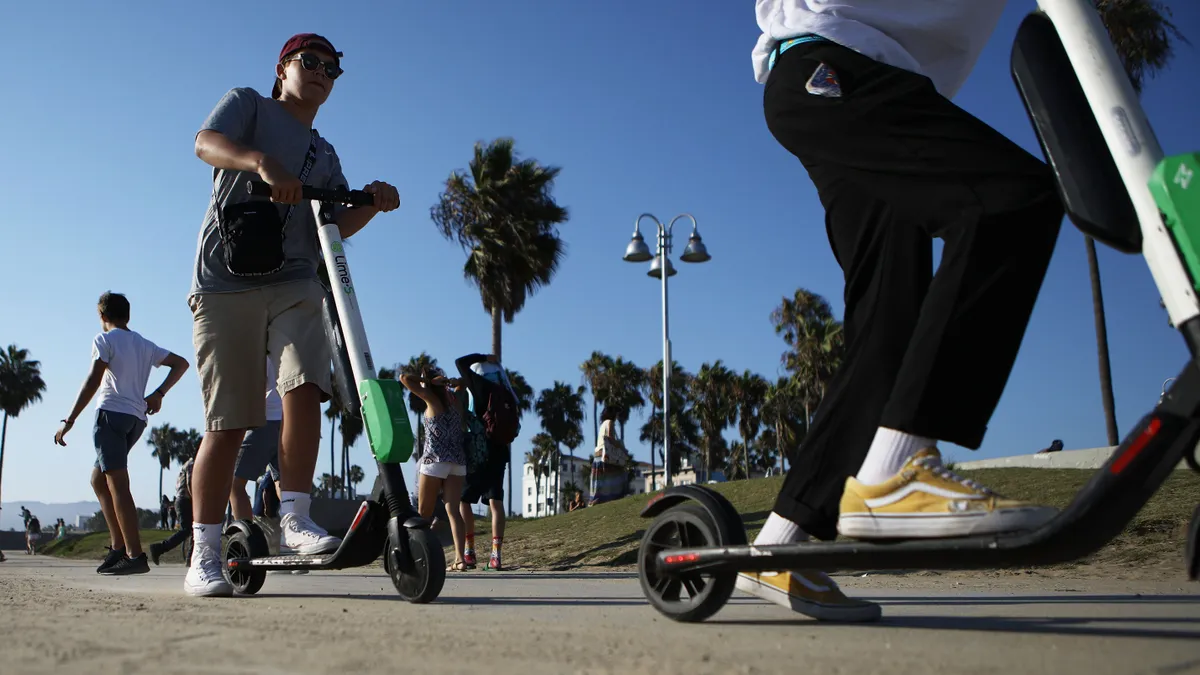Following a severe drop in ridership during the COVID-19 pandemic, shared micromobility use is scooting back. Overall in 2021, ridership fell short of 2019 levels, but monthly ridership began passing pre-pandemic levels in the middle of last year, according to an annual report from an industry group.
“The industry continued to rebound and demonstrate tremendous resilience, with the number of systems growing past pre-pandemic levels,” stated the 2021 Shared Micromobility State of the Industry Report, released by the North American Bikeshare & Scootershare Association this month. NABSA represents 73 members in six countries that offer shared use of pedal bikes, e-bikes and scooters, including organizations, businesses and cities. The 2021 report covers the U.S., Canada and Mexico.
While the number of trips taken in 2021 exceeded those in 2020 at the height of the COVID-19 pandemic, it still falls short of previous levels in 2019. North Americans took an estimated 128 million trips on shared mobility vehicles in 2021 — 53% more than in 2020, but 18% lower than in 2019, the report stated.
The report states that trips on e-scooters accounted for almost half of all trips, an increase from just over a third in 2020, and the overall number of pedal bike and e-bike trips rose, too.
“On the whole, we see that [micromobility sharing] is moving out of the pandemic better than when it went in,” said NABSA Executive Director Samantha Herr.
Starting in the middle of 2021, monthly ridership began surpassing 2019 levels, she said. “There are a lot of indications continued growth will happen,” Herr said. “Many more people tried it during the pandemic … As horrible as the pandemic has been, it really did highlight the importance of shared micromobility.”
NABSA counted 298 cities with at least one sharing system and 97 that offered both bikes and e-scooters.
“The number of e-scooters increased significantly during 2021 and is now 57% of the shared micromobility fleet. The number of bikes increased only slightly compared to 2020,” NABSA reported.
Electric versions of these two-wheeled vehicles broke a barrier to using micromobility for many users, "making it easier to traverse hills or not have to sweat as much on your way to work in addition to being fun,” Herr said.
Other stats highlighted in the report included:
- The pandemic altered the way the public uses shared mobility. Three-quarters of agencies responding to the survey reported changes in the times of day trips were made, and 70% reported more weekend riding.
- Men and those between the ages of 25 and 44 were overrepresented as a share of the population that use shared micromobility.
- Most providers took steps to improve transportation equity gaps with 92% offering discount programs, 85% offering some sort of alternative form of payment and 79% offering some type of education and outreach. But only 21% reported offering adaptive vehicles beyond e-bikes for those with physical challenges.
- Private corporations run most of the systems (58%) while governments operate 29% and non-profits the remaining 13%. Operators reported their top three program costs in order as rebalancing and recharging, vehicle maintenance and repair, and overhead costs including fees.










